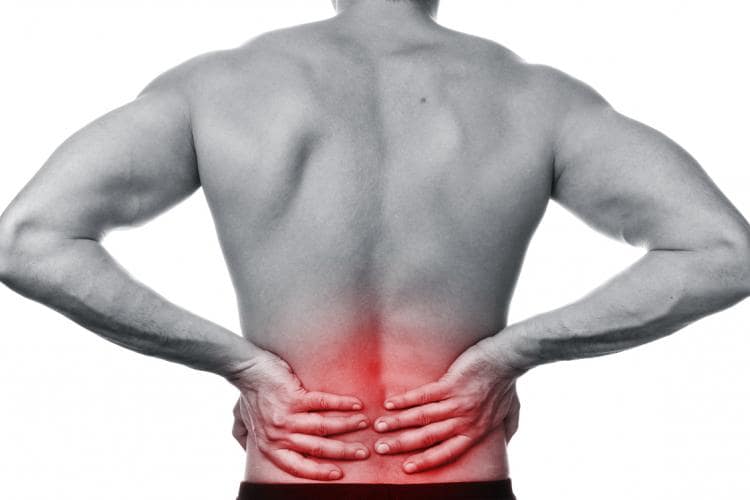Why Back Pain Hurts
Low back pain connects with a special region in the brain and produces the fear that you will never be the same again. Here are some guidelines that may help you.

When we see a patient with back pain the key questions we ask are:
—How and when did it happen?
—Is the pain localized to the low back, or does it radiate?
—Do you have numbness or weakness in the legs?
Assuming there wasn’t a major accident or trauma to the back, the physician is trying to determine one of the following: Do you have a disc herniation that is pushing on the nerves that exit the back and go down the legs (sciatica), do you have bony narrowing in the spine from spurs or arthritis (stenosis), or is this more common, muscle-initiated back pain. (The most common things we find in a muscle physical exam are limitations of motion in the low back and tight hamstrings.) Other causes—like infections, tumors, and congenital problems—are rare.
If the exam and history of the back pain have a high probability of disc origin, an MRI is most helpful to shorten the process. A large herniated disc pushing on the nerve root may respond to non-operative measures, but often does not. It is much faster to just remove the dislodged piece of disc through a minimally-invasive outpatient surgery than to suffer with the pain for months.
Speaking of suffering: Back pain that is not disc related falls into the realm of the Buddhist proverb that says, “pain is unavoidable, but suffering is optional.” This is where the care plans get both interesting and controversial.
In the past, patients suffering from back pain were placed on bedrest with narcotic medication, often for weeks. There was nothing good about this treatment. Today we focus on breaking the cycle of muscle injury, which leads to stiffness. The associated inflammation irritates the pain fibers, all of this creating fear and depression. This leads to even more limited activities, along with low testosterone or adrenaline stimulation. On top of all of that, the common pain medications taken by many patients actually increase their depression.
Our preference is immediate, hands-on physical therapy, focusing on a range of treatments undertaken all at once. First, we work on mobilizing the stiff muscles and joints, contracting counterbalancing muscles. Selectively exercising them breaks the muscle spasm of the pain-generating muscles. Second, we use hands-on soft tissue and muscle massage—focused on trigger points and fascial release— combined with manual traction. This directly relaxes both the treated muscle and the mind. Third, we supervise specific exercises which do not irritate the back but help the patient achieve a sweat workout—thereby increasing testosterone, adrenaline, pheromones, and a sense of well-being.
Physical therapy should also focus on exercises to increase the function of lower back stabilization and to support muscles with vague names like the transverse abdominus and multifidi. It should also ensure you have adequate hip and upper back mobility. Stiffness and tightness above or below the lower back will add to the excessive pressure on the discs or nerve roots during movement. Performing daily tasks with proper body mechanics will also help reduce unnecessary pressure on the low back. Ideally, daily physical therapy should be taken advantage of until the episode is relieved. Pool, hot tub, and hot shower exercises help keep the therapeutic exercises going after the patient leaves the clinic.
For pain relief, alternating ice and heat, combined with acetaminophen and ibuprofen, are effective. With acute pain, having the physician add a shot of ketorolac (Toradol) can often immediately break the spasms.
Back pain hurts because some people have suffered for a long time and it has changed their lives. The key is immediate treatment. The faster that back pain is relieved, the less likely it becomes a chronic problem. It is both fear and the fact that the pain cycle is often left to “heal itself” for weeks before treatment that the patterns become embedded, and the pain raises to a level where it cannot be ignored. If you want back pain behind you, deal with it up front.
